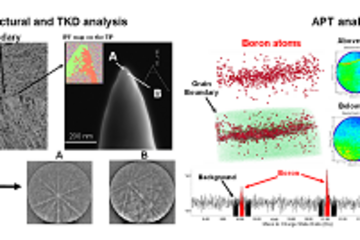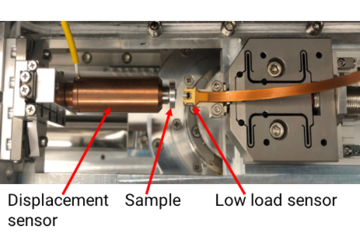All genres
1.
Journal Article
Initial Oxidation and Chromium Diffusion. I. Effects of Surface Working on 9-20% Cr Steels. Corrosion Science 46 (5), pp. 1113 - 1127 (2004)
2.
Journal Article
Supersaturation of Iron with Nitrogen, Hydrogen or Carbon and the Consequences. Materiali in Tehnologije 38, pp. 25 - 36 (2004)
3.
Journal Article
Role of Alloying Elements and Carbides in the Chlorine-induced Corrosion of Steels and Alloys. Materials Research 7 (1), pp. 89 - 95 (2004)
4.
Journal Article
Initial Oxidation of a 9 % CrMo- and a 12 % CrMoV – Steel. Steel Research International 75 (1), pp. 38 - 46 (2004)
5.
Journal Article
Metal Dusting Resistance of High Chromium-Alloys. Material and Corrosion 54, pp. 860 - 893 (2003)
6.
Journal Article
Occurrence of Metal Dusting - Referring to Failure Cases. Material and Corrosion 54 (10), pp. 799 - 804 (2003)
7.
Journal Article
Metal Dusting Behaviour of Welded Ni-Base Alloys with Different Surface Finish. Material and Corrosion 54, pp. 785 - 792 (2003)
8.
Journal Article
Microprocesses of Metal Dusting on Iron - Nickel Alloys and their Dependence on Composition. Material and Corrosion 54 (10), pp. 747 - 751 (2003)
9.
Journal Article
Nitrierung als Korrosionsprozess. Härterei-Technische Mitteilungen 58, pp. 69 - 73 (2003)
10.
Journal Article
Metal Dusting. Material and Corrosion 54, pp. 736 - 746 (2003)
11.
Journal Article
Nitridation in NH3–H2O Mixtures. Material and Corrosion 54 (11), pp. 895 - 901 (2003)
12.
Journal Article
Effect of H2S on metal dusting of iron. Materials and Corrosion 54, pp. 793 - 798 (2003)
13.
Journal Article
Fundamental aspects of chlorine induced corrosion in power plants. Materials at High Temperatures 20, 2, pp. 153 - 159 (2003)
14.
Journal Article
Aufkohlung, Carbidbildung und Metal Dusting. Härterei-Technische Mitteilungen 57, pp. 11 - 16 (2002)
15.
Journal Article
Fundamentals of grain boundary segregation in iron and steels. Acta Metallurgica Slovaca 8, pp. 14 - 23 (2002)
16.
Journal Article
High temperature corrosion of cracking tubes. Materials and Corrosion 53, pp. 494 - 499 (2002)
17.
Journal Article
Role on sulfur in carburization, carbide formation and metal dusting on iron. Surface and Interface Analysis 34, pp. 369 - 374 (2002)
18.
Journal Article
Effect of sulphur on the formation of graphite at the surface of carburized iron. Surface and Interface Analysis 34, pp. 380 - 383 (2002)
19.
Journal Article
Inhibiting the reoxidation of directly reduced iron by vapour phase inhibitors. Steel Research 73, p. 421 - 421 (2002)
20.
Journal Article
Decarburization of non-oriented electrical steel sheets doped with selenium. Materials Technology 35, pp. 337 - 341 (2001)











